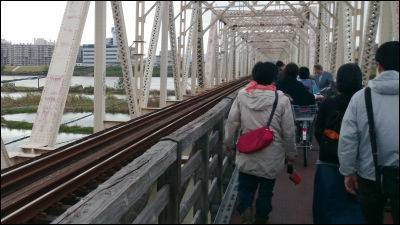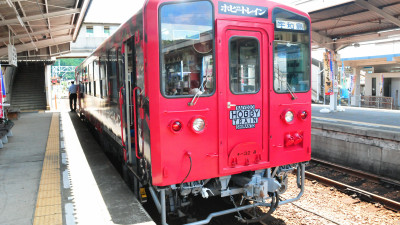We visited the new Mitsumata Colony in Tsu City, Mie Prefecture, where Mitsumata, the plant used to make Japanese paper and banknotes, is in full bloom.
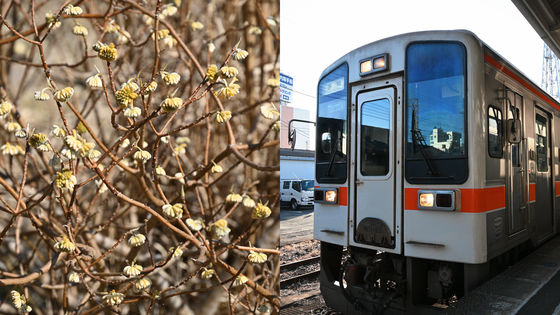
In 2006, the 'Heisei Great Merger' took place in Mie Prefecture, where 10 municipalities merged to form the new city of Tsu. In Misugi-cho (formerly Misugi-mura), part of the merger, there is a colony of Mitsumata trees, which are the raw material for washi paper and banknotes and bloom yellow in spring. They have been planted since the mid-1950s, but due to the large-scale thinning carried out in 2012, the number of Mitsumata trees has increased dramatically, making this a 'new tourist attraction,' so I went to see what it was like.
Welcome to Misugi's newest attraction, the Mitsumata Colony | Tsu City
I arrived at Matsusaka Station with the aim of reaching the destination by public transportation.
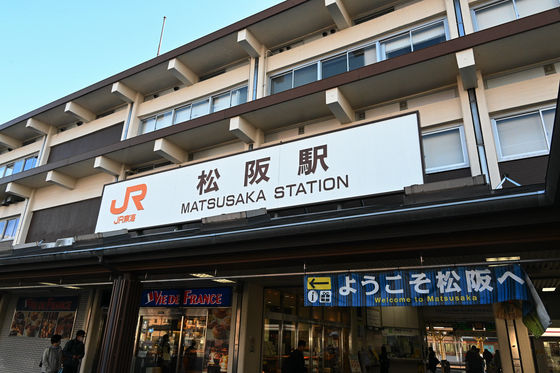
To get to Misugi-cho, use the JR Meisho Line. There are seven trains a day heading for Ise-Okutsu, and in addition to these, there is an early morning train bound for Ieshiro, which connects with the train bound for Ieshiro at Ieshiro Station. This time, I took the train bound for Ieshiro.
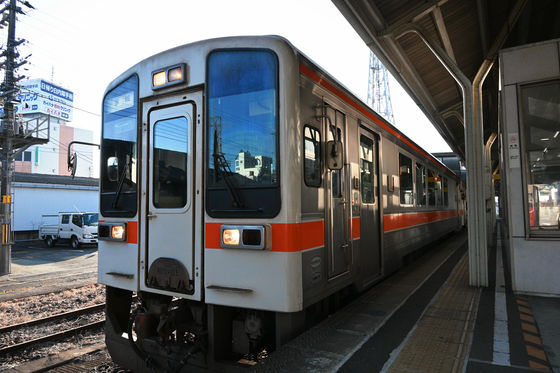
The Meishu Line runs alongside the Kumozu River and heads further into the mountains.
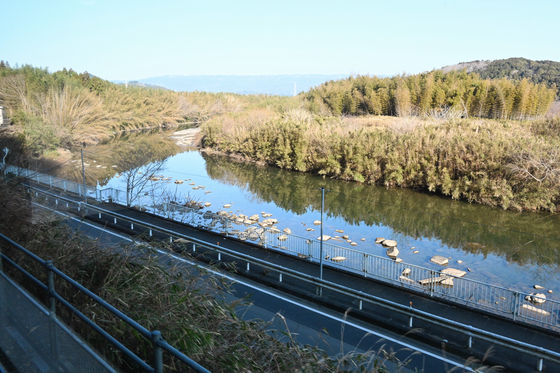
At Ieshiro Station, I changed to the train bound for Ise Okutsu, which was waiting on the opposite platform. The train bound for Ieshiro was a two-car train, but the train bound for Ise Okutsu was a one-car train.
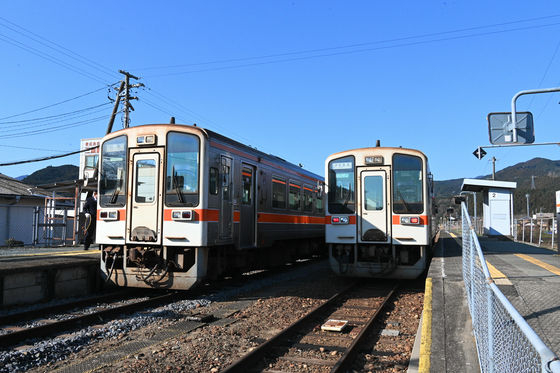
Hakusan High School is located near Iegi Station, and many students got off the train.
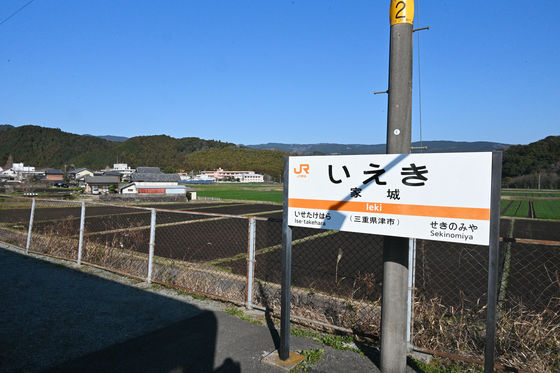
The vehicle, carrying mostly people who appeared to be tourists, entered the Misugi town area.
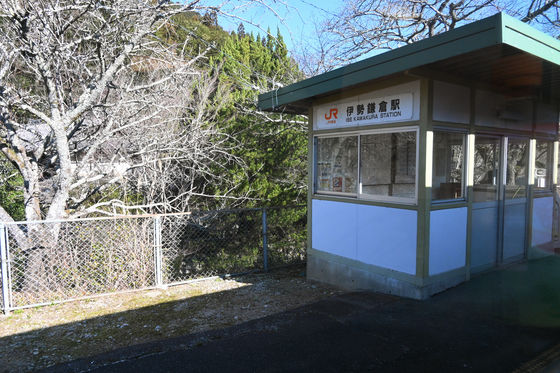
The Meisho Line was severely damaged by Typhoon Hagibis in October 2009, and buses were used to replace the service on the section between Ieshiro Station and the terminus, Ise-Okutsu Station, for six and a half years. Thanks to the restoration of the line, it is now possible to go and see the Mitsumata trees using only public transportation.
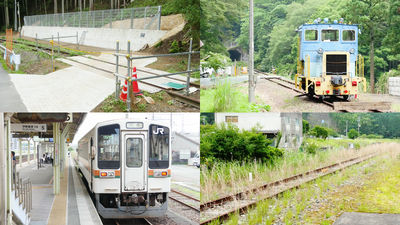
The Kumodate River was visible from the train window again.
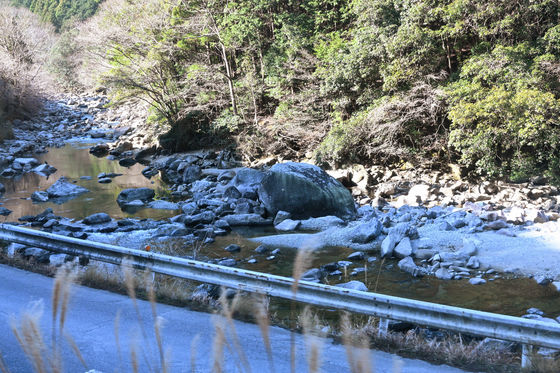
When we arrived at Hizu Station, someone from another seat said, 'The Mitsumata trees are blooming.' I looked outside and sure enough, the trees were in bloom.
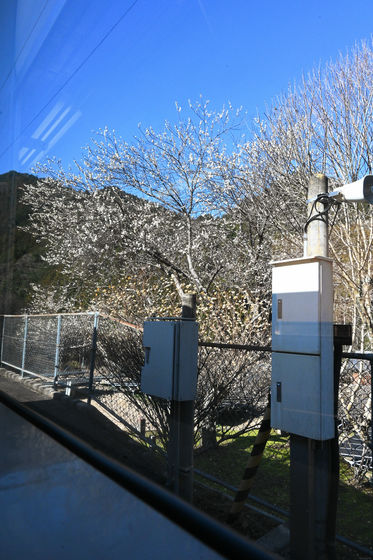
The yellow flowers near the fence below are Mitsumata. I never thought I would see them before I reached the colony.
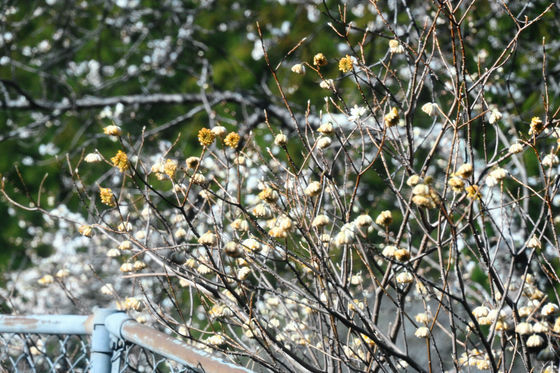
The next station after Hizu Station is Iseokutsu Station, the last stop.
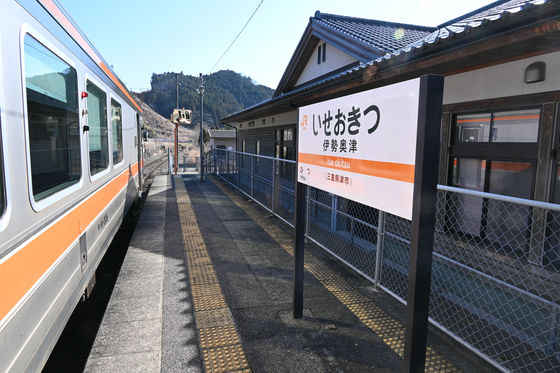
During the Mitsumata season, special Tsu City Community Bus services run on Saturdays, Sundays, and holidays, roughly coinciding with the trains. In the morning, the train arrived at 8:59 and the bus departed at 9:05, making for a perfect connection.
Tsu City - Tsu City Community Bus Operation
It takes about 5 minutes to get to Shimogainai, the closest place to the Mitsumata colony. The fare is 200 yen, and IC cards cannot be used. The bus continues to Shikitsu in Mitsue Village, Nara Prefecture, about 10 minutes away.
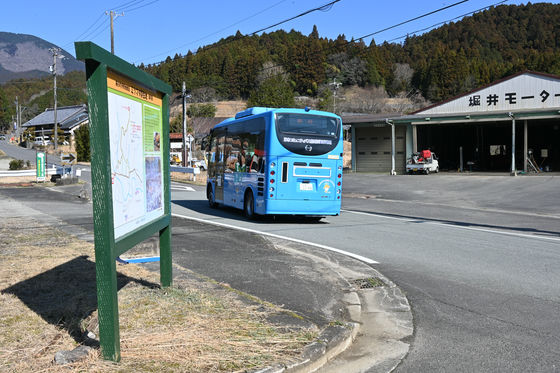
There is a large guide map, so follow it to get there. Even if you come by car, from here onwards the road is a residential road and is narrow, so you will need to park your car in the temporary parking lot behind the map and then walk.
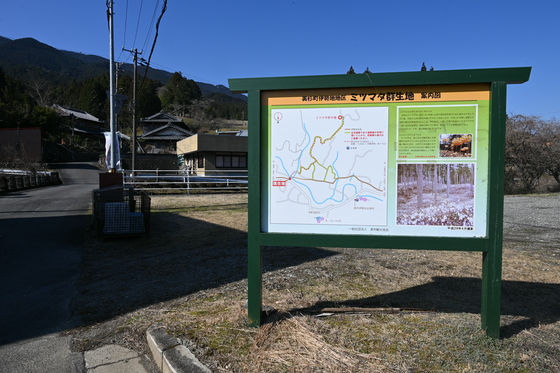
The Mitsumata colony is 1,000m from Shimokakinai bus stop.
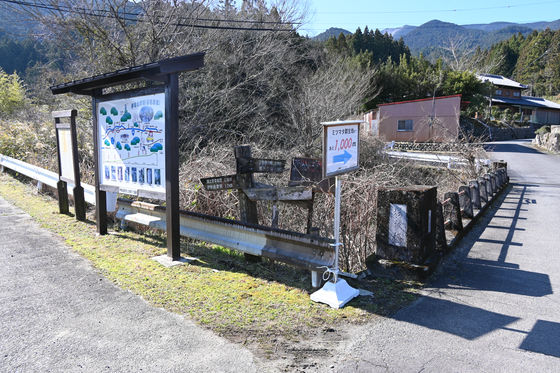
As I continued along the road, I came across a sign pointing left and saying '900m left.' This arrow is placed at the fork in the road, so I'm sure I wouldn't get lost.
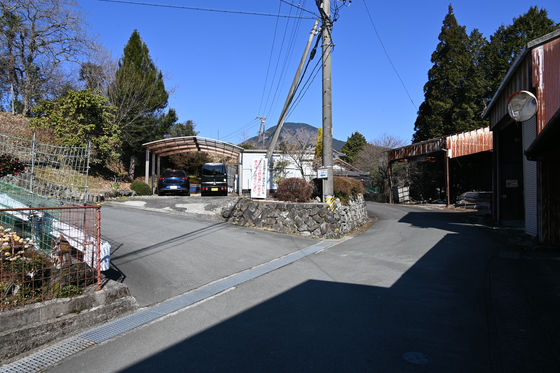
Just past the sign, there was a small tree growing on the right hand side of the direction of travel.
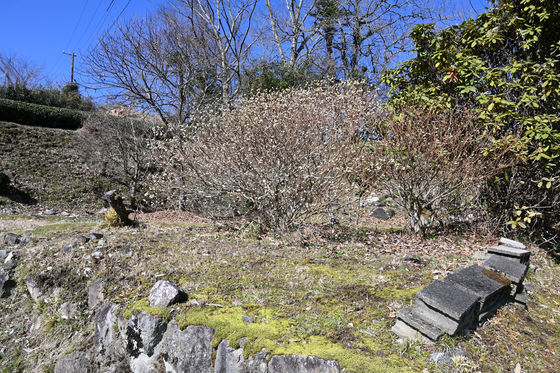
After climbing a slightly steep hill, we saw a sign that said '850m remaining.'
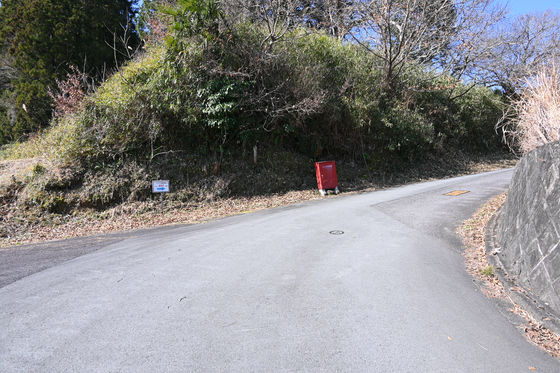
I continued walking until I was moderately sweating and reached '450m left.'
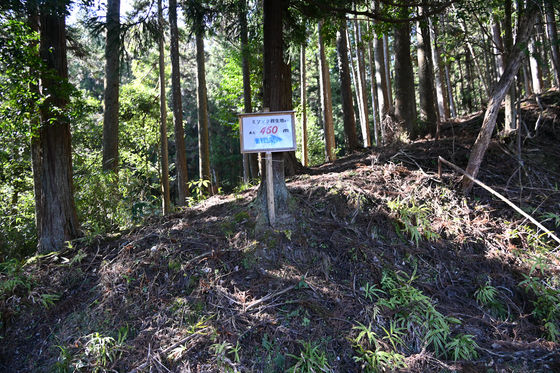
The road has been paved for a while, but around this point the road becomes unpaved.
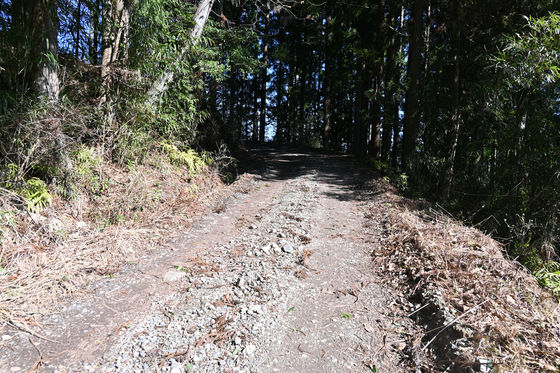
Once the road becomes unpaved, there are no forks in the road for a while, and then you reach a sign that says 'Welcome to the Mitsumata Colony.' On the left side of this sign there are stairs, and if you go up they will connect to the promenade to the colony. On the right there is a similar unpaved road that continues to the observation deck. The path to the observation deck is wider, so I went straight this time.
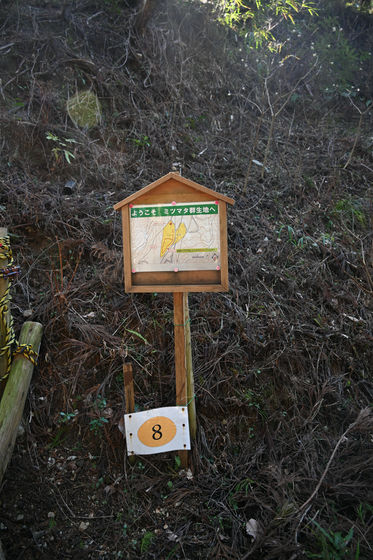
Soon the road forked, with a paved road on the left leading up a steep slope, and an unpaved road on the right leading up a gentle slope. Here, the left path leads to a mitsumata colony, and the right path leads to the entrance to the

There is a gazebo at the top of the hill.

The shrub opposite the gazebo is a Mitsumata. This is...
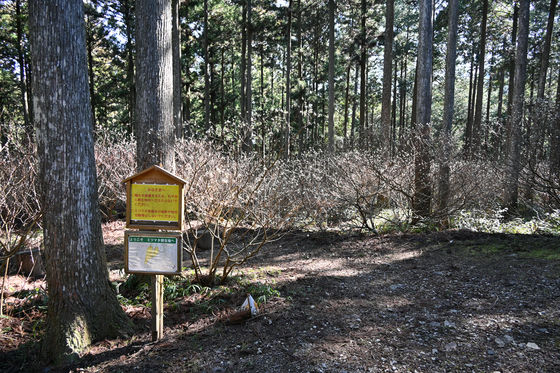
They were planted in an area that had been thinned out, and the buds on the ones in the sunny spots were swelling, but they were not yet in full bloom.
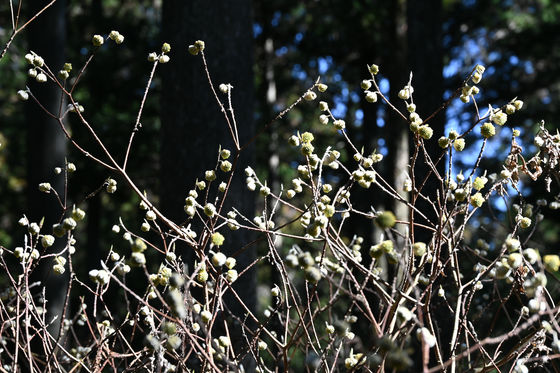
If you go up a little from the gazebo, you will find the observation deck.
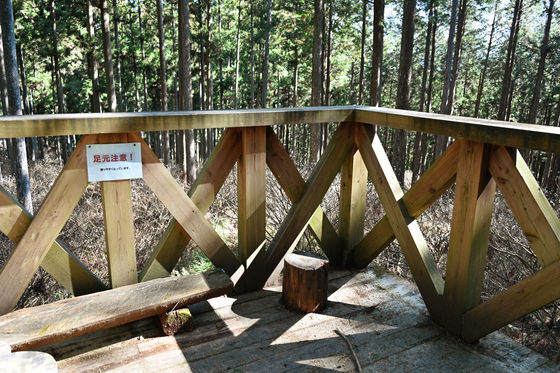
Looking around the Mitsumata colony from the observation deck, it looks like this. It's too early in the season, so the flowers have yet to bloom.
Here and there we could see tiny buds just about to open.

There is a promenade that runs through the colony, but will it be possible to walk through it when the flowers are in full bloom?
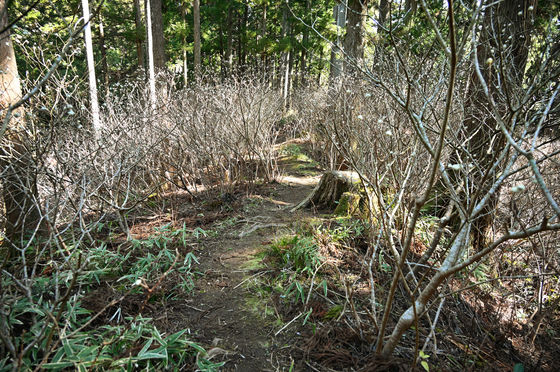
I walked along the promenade and returned to the spot where the sign 'Welcome to the Mitsumata Colony' was. I hope the water bottle left behind on the stump will be returned safely to its owner.
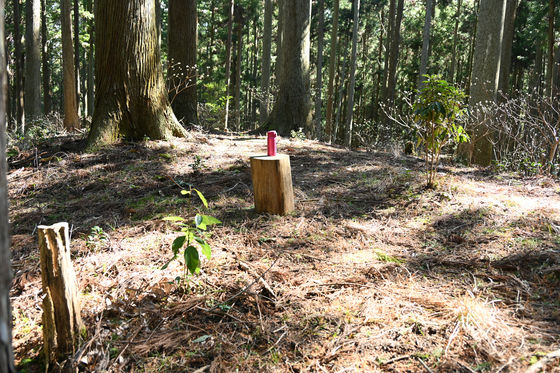
Additionally, on the way down towards the Shimokakinai bus stop, we also saw several Mitsumata trees.

Since there were no obstructions and the place was well lit, the leaves had turned a pretty yellow color.
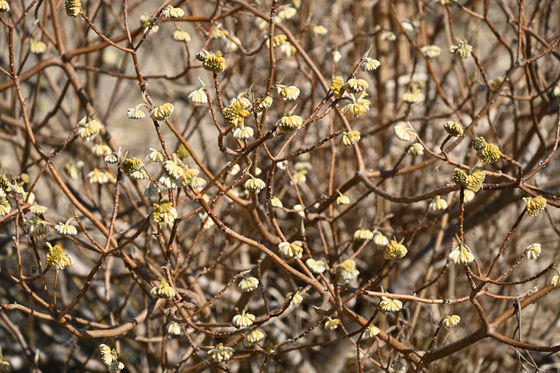
I returned to the Shimogakiuchi bus stop. The regular community buses only run on weekdays, so they cannot be used on weekends.
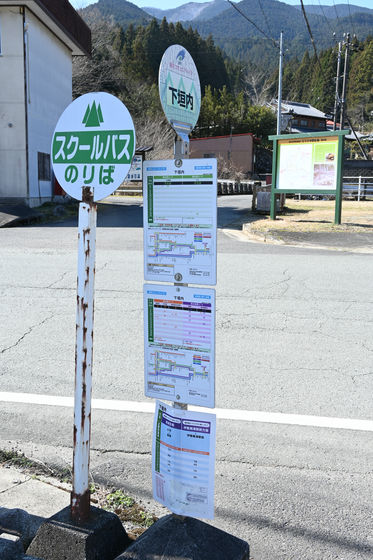
The special bus is scheduled to connect with the Meisho Line at Ise-Okutsu Station, but this time, instead of returning to Matsusaka on the Meisho Line, I decided to transfer to a bus and go to Nabari, which is the origin of the name 'Meisho Line'. However, there are not many buses running, either the Tsu City Community Bus to Shikitsu, where I would transfer, or the Mie Kotsu bus from Shikitsu to Nabari Station. It takes about 10 minutes by bus from Shimogainai to Shikitsu, but it would take more than an hour to walk, and since I would end up taking the same bus from Shikitsu, I decided to go back to the nearby Ise-Okutsu Station to adjust my time.
As soon as you head towards Ise-Okutsuka Station from Shimo-Gakiuchi, the road splits into the national highway (left) on which the bus came and the Ise Honkaido Highway (right).
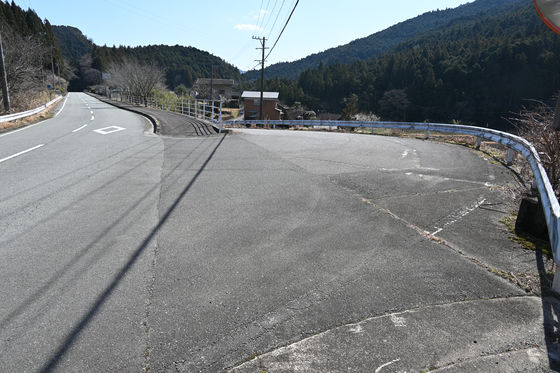
There are streetlights and other things like this all-nighter set up along the Ise Honkaido Highway.

The Ise Honkaido Highway first joins the national highway, then branches off to the right again at the village of Okutsuka.
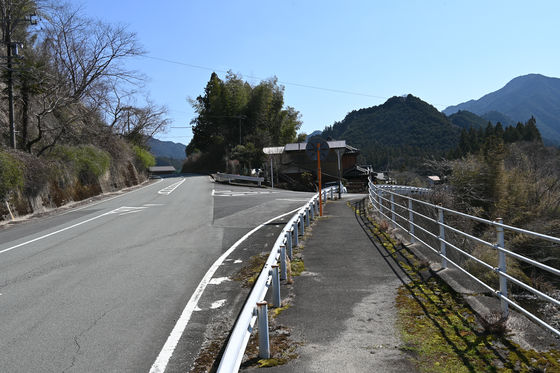
At the entrances of the houses in this area, there are noren curtains displaying the former store names, with the inscription 'Ise Honkaido Okutsujuku Noren Street.'
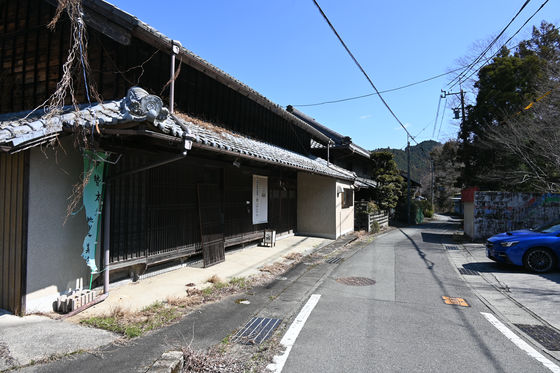
I returned to 'Nushiya' which was in front of the street in front of the station. 'Nushiya' was a general store that sold daily necessities, cigarettes, etc.
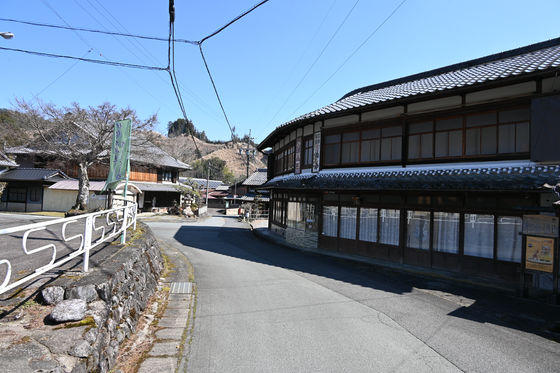
Ise Okutsuka Station is directly ahead at the end of the road.
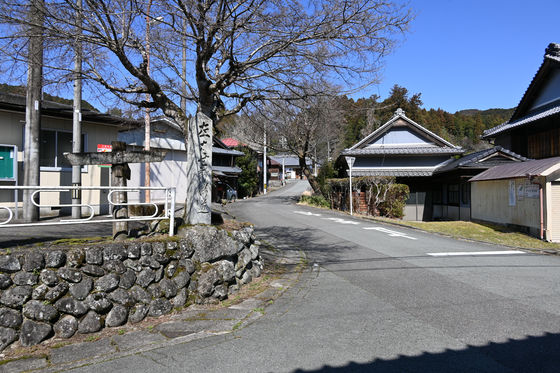
There was a large vacant lot in front of the station. It was apparently the site of a movie theater called 'Okutsu Theater.'
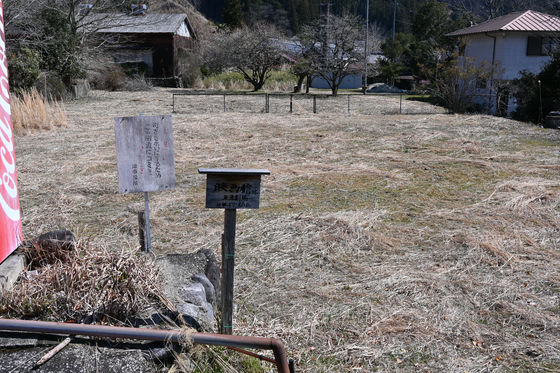
Upon entering the station, there was a pamphlet about the Mitsumata colonies and a 'Mini Mitsumata Photo Book.'
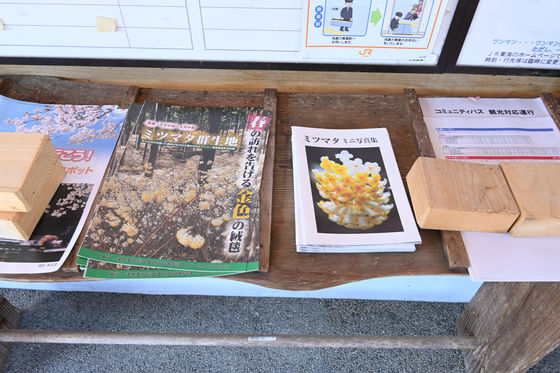
As the name suggests, this is a leaflet that compiles photos taken by Mitsuji Sakai of Misugi Town. Sakai updates information on
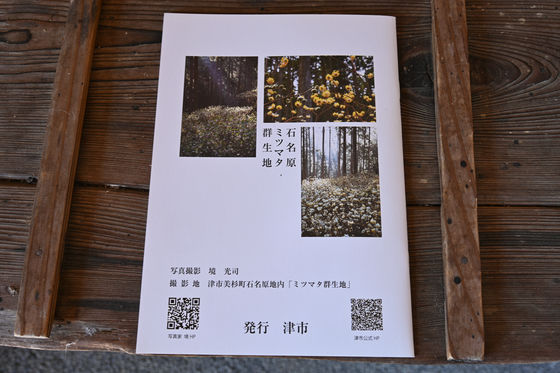
A photo of Ise Okutsuka from the past displayed inside the station.

Mie Kotsu bus bound for Nabari Station.

I wandered around the station. The water tower on the west side of the station was once used when steam locomotives operated here.
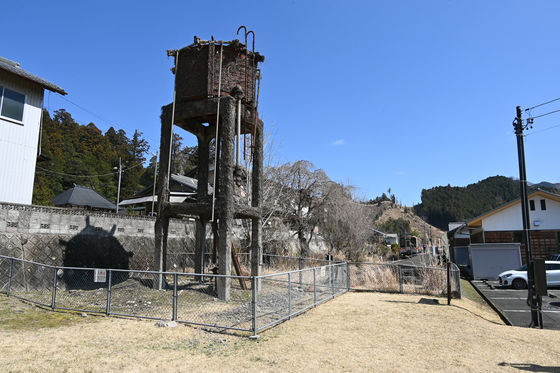
Hidamari is a tourist information and exchange facility adjacent to the west side of the station. More than 10 years have passed since my last visit, and the exterior has taken on a more sophisticated look.

There was a quiet headmark placed there that read: 'Celebrating the full restoration of the Meisho Line, March 26th, 2019, Matsusaka - Ise Okutsuka.'
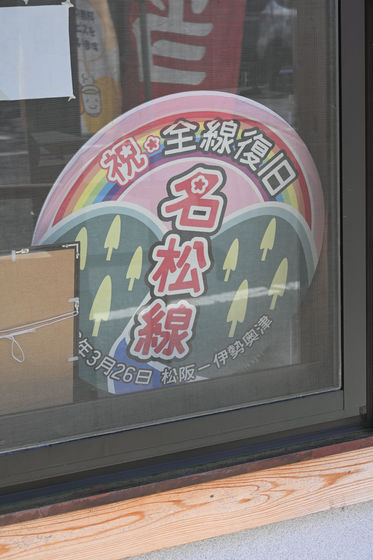
When the time came, we got on the bus and headed to Shikitsu. The 'Misugi Circular Route' was operated by a station wagon.
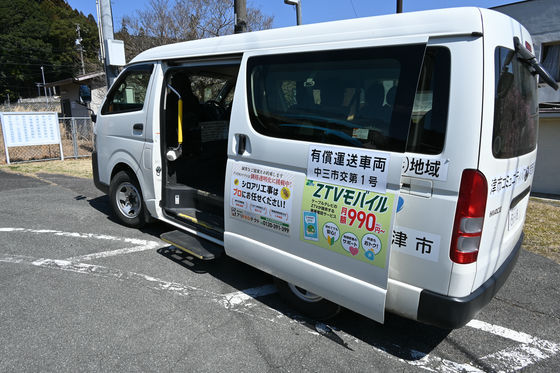
We arrived at Shikitsu. There were no landmarks around the bus stop, but if you keep going straight you will see
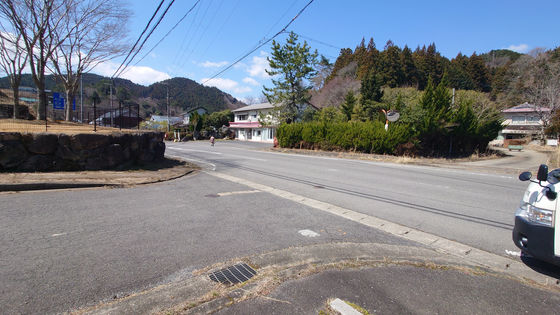
In addition to the farm produce direct sales store 'Kaido Ichiba Mitsue,' there is also a hot spring facility 'Mitsue Onsen Himeishi no Yu,' and next to the hot spring facility there is a self-service corner called Uguisu where you can eat, so even if you have to wait a little, it's no problem. It is closed on Tuesdays.

This is the 'Deer Kalbi Yakiniku Donburi' (grilled deer ribs rice bowl). It comes with miso soup, chilled tofu, stewed deep-fried tofu and green vegetables, and pickles, and costs 1,500 yen.
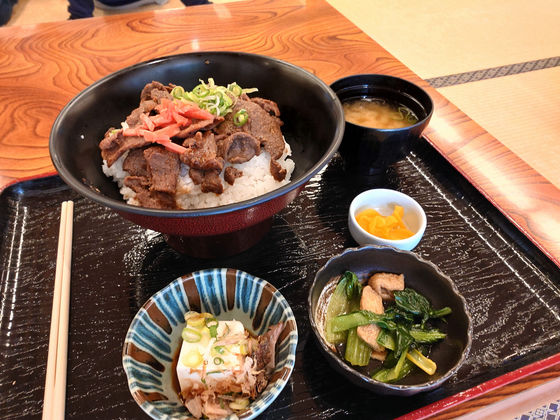
The 'fried deer curry' with thick fried deer is 1300 yen with salad. There is also a large serving of rice, but even the normal portion had a lot of rice.
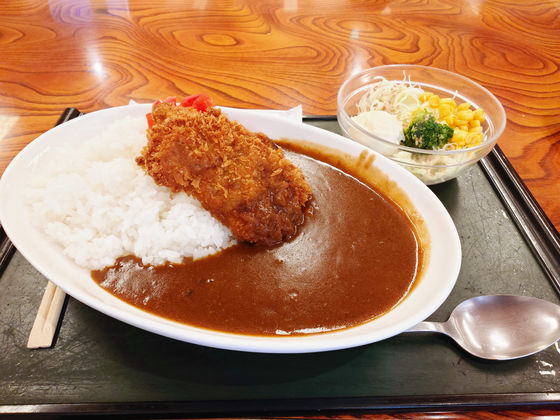
Mie Kotsu operates six buses a day from Shikitsu to Nabari Station on weekdays and four buses a day on weekends and holidays. This time, I waited about three hours before boarding the bus bound for Nabari Station.
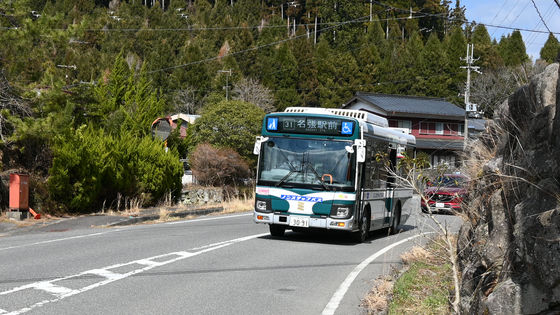
The starting point is Shikitsu, Mitsue Village, Nara Prefecture, but soon after departing, the bus enters the Taro district of Misugi Town, Tsu City, Mie Prefecture again. The Meisho Line runs along the Kumozu River, but this bus runs along the Nabari River.
Lake Hinachi was formed by the Hinachi Dam.
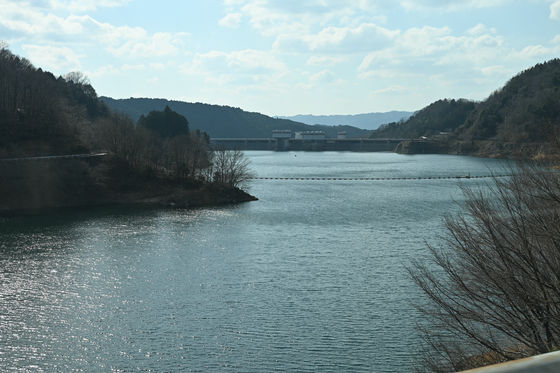
The bus goes around three sides of the lake and then goes down next to Hinachi Dam.
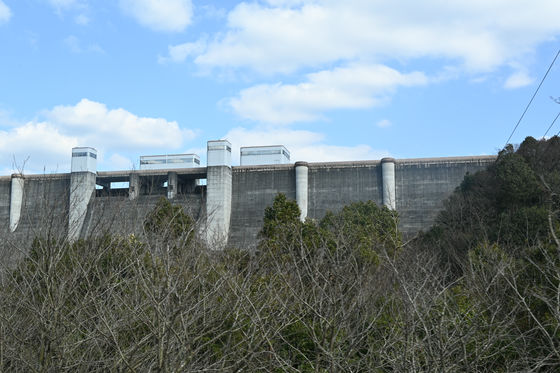
It took 54 minutes from Shikitsu to Nabari Station.

Related Posts:




